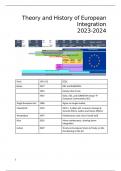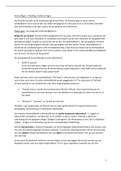Samenvatting
Samenvatting - Theory and History of European Integration (MAN-BCU2009EN)
- Vak
- Instelling
Een samenvatting die de kern van alle stof bespreekt zoals deze op het tentamen komt. Geen irrelevante informatie, puur de dingen die je voor het tentamen moet kennen.
[Meer zien]












